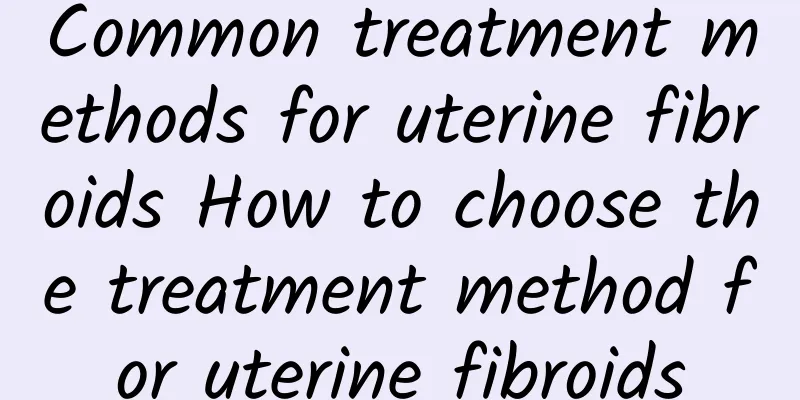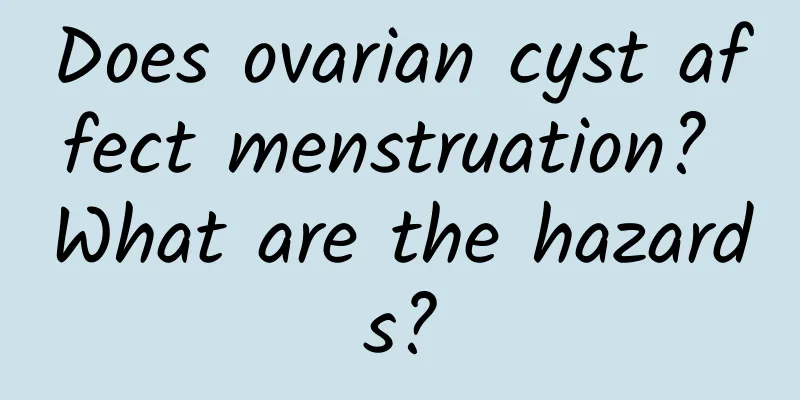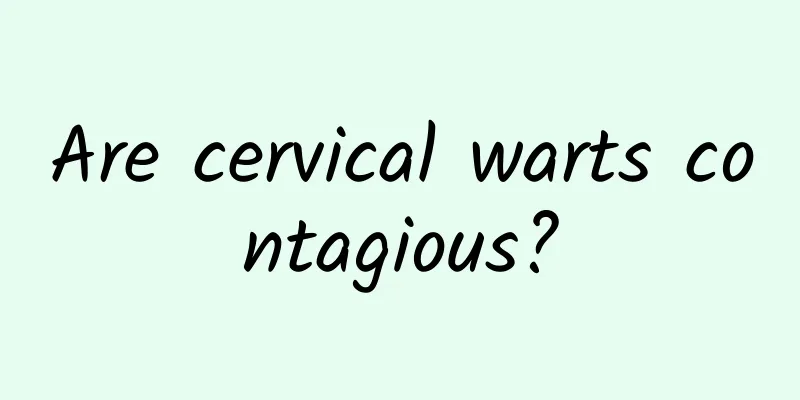Common treatment methods for uterine fibroids How to choose the treatment method for uterine fibroids

|
Uterine fibroids are a gynecological disease that endangers women's health. So for female friends, how to choose the treatment method for uterine fibroids that suits them? Uterine fibroids can easily cause anemia and malnutrition, affect menstruation, lead to infertility, produce compression symptoms, and in severe cases, they can become malignant and endanger life. Therefore, patients should not take it lightly. While actively treating, they should also treat uterine fibroids correctly. Uterine fibroids are the most common benign tumors of the female genitalia. Studies have found that about 20% of women aged 30 to 50 suffer from uterine fibroids, and the number has been increasing in recent years. How many surgeries are needed for uterine fibroids? The main hazards of uterine fibroids, adenomyosis, adenomyosis, and dysfunctional uterine bleeding to women are menorrhagia, severe anemia, infertility, infection, and compression symptoms. Traditional treatments for uterine fibroids depend on the specific situation: patients with mild symptoms and uterine size not exceeding 12 weeks of pregnancy do not need surgery, but only need to go to the hospital for a checkup every 3 months and pay attention to changes in the fibroids at any time. Especially for near-menopausal patients, conservative treatment is generally recommended because fibroids may shrink naturally after menopause. Treatment for uterine fibroids also includes medication, which is usually safer than surgery. Optional medications: 1. Guizhi Fuling Capsule: Mainly used for lumps, amenorrhea, dysmenorrhea, and postpartum lochia caused by blood stasis in women. Uterine fibroids, chronic pelvic inflammatory masses, dysmenorrhea, endometriosis, and ovarian cysts with the above symptoms. 2. Dangui Capsule: Mainly used for promoting blood circulation and removing blood stasis, softening and dispersing nodules. Used for uterine fibroids, pelvic inflammatory masses, qi stagnation and blood stasis, with symptoms of lower abdominal distension and pain, lumbar pain, multiple bands, anal swelling, dark tongue and blood stasis. 3. Xiaojie'an Capsule: It can promote blood circulation and dissipate blood stasis, soften and disperse nodules. It is used for breast lumps caused by qi stagnation and blood stasis, breast lobular hyperplasia, ovarian cysts, and uterine fibroids with the above symptoms. |
Recommend
What should I do if I have pelvic inflammatory disease and cannot live without anti-inflammatory drugs every month?
What should I do if I have pelvic inflammatory di...
What should not be eaten for pelvic effusion? What are the methods for treating pelvic effusion?
What can't you eat if you have pelvic effusio...
What are the complications of irregular menstruation?
What are the complications of irregular menstruat...
How to detect pelvic effusion
Pelvic effusion is a very common gynecological di...
How to diagnose cervical hypertrophy
How to diagnose cervical hypertrophy? This is a q...
Will frequent sexual activity cause cervical erosion? What are the hazards of cervical erosion?
Sex is the spice of a couple's life. If the s...
What are the key points for the treatment of uterine fibroids? How to adjust after uterine fibroid surgery
Uterine fibroids are related to hormones. Because...
What are the treatment methods for menopausal syndrome? Adjust according to the actual situation
In fact, there are many ways to help patients adj...
How to take care of amenorrhea?
Some women in life have amenorrhea at an early ag...
Several major causes of uterine fibroids
Among the many gynecological diseases of women, e...
Female friends should pay attention to these symptoms of cervical hypertrophy
The cervix is also part of the female reproduct...
Are female stars crazy about drinking lemon water to lose weight? Burn fat with vitamin C
Lemon water weight loss is quite popular among fe...
How to treat menopause?
What are the treatment methods for menopause? Thi...
How to check pelvic inflammatory disease more accurately
How to check pelvic inflammatory disease more acc...
5 natural foods to keep you slim and avoid gaining weight
You have tried hard to eat less and exercise more...









